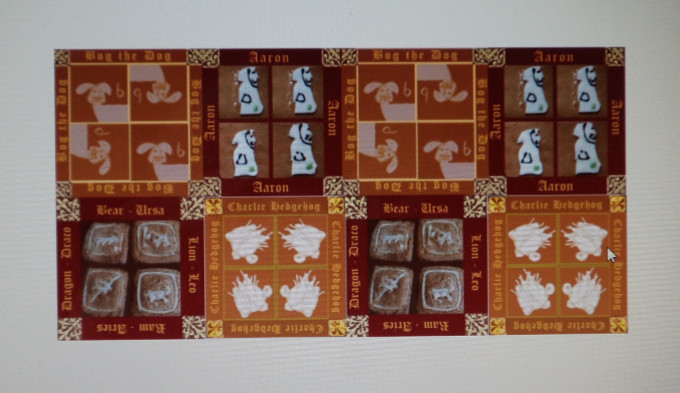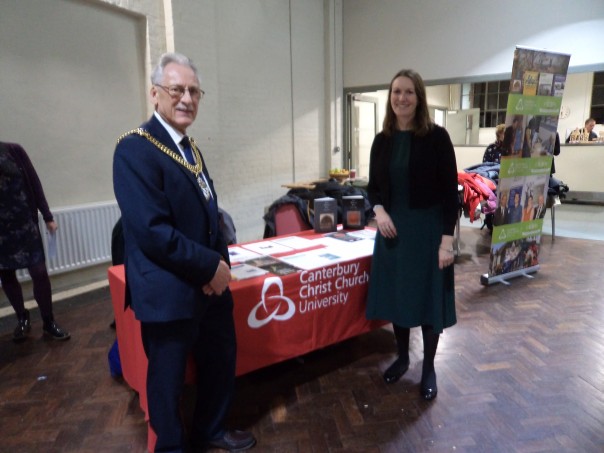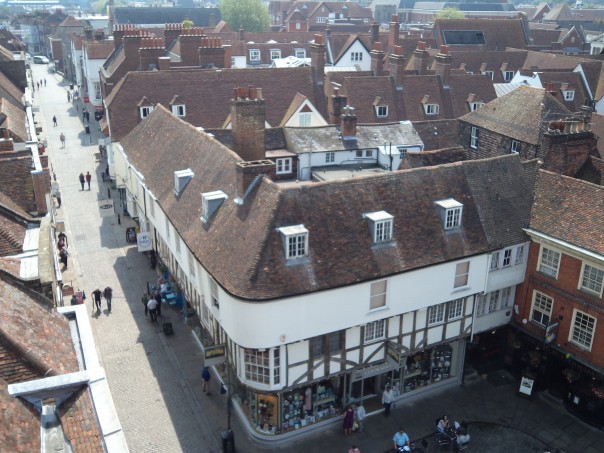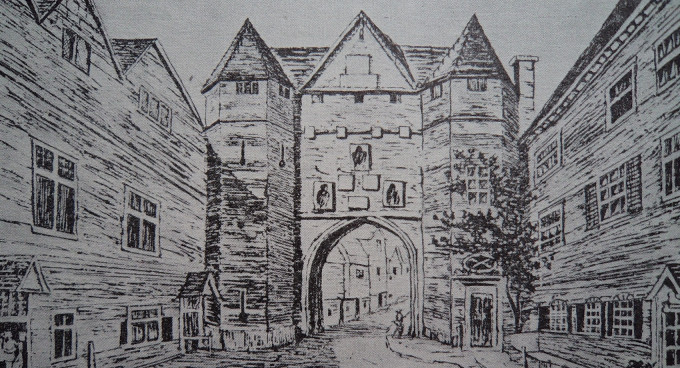Dr Diane Heath is in the process of ‘building’ the ‘medieval tile’ floor. So if you want to help her by providing your ‘medieval animal tile’ design, even if you cannot make it of gingerbread, please do send a photo of your design to her at diane.heath@canterbury.ac.uk and in return she will send you a certificate. For after 800 years, it is important to remember that 7 July this week was a major anniversary of Thomas Becket’s Translation, and one of the main features of the new shrine in the Trinity Chapel was the magnificent pavement.
The other development that I want to mention this week is that Professor Carolyn Oulton has recently launched the pilot of the Kent Digital Maps project: Dickens Land. Please feel free to check it out at: https://kent-maps.online/dickens where you will find ‘Mobile Landscapes’ and ‘Great Expectations: a Curated Walk’ that will bring exciting discoveries and new ideas about familiar sites (and sights). If you would like to feedback responses, please contact Carolyn at carolyn.oulton@canterbury.ac.uk because this is only the beginning!

Having had two blogs last week, I thought I would just offer a short one this week that takes up the theme of trying to find ways to stimulate the economy which has recently been in the news. Thinking about the later Middle Ages, royal (state) initiatives were in their infancy, and for most townspeople, whether engaged in manufacturing or what we would call the service industries, help at times of difficulty was most likely to come through civic or corporate means, or provided by individuals.
Taking evidence from late medieval Canterbury regarding civic initiatives for manufacturing, in this case cloth making, the mayor and aldermen brought in several protectionist measures, as well as those to stimulate production, one of the former forbade the selling of wool to spinners and weavers outside the city, the latter a decree that each of the civic officers and others should buy a set length of locally-produced cloth the following year. Ways to support the service industries, most especially pilgrimage, were not forgotten in the form of gaining governmental approval to pave the city’s principal streets, as laid out in the petition to parliament, and perhaps at a far more mundane but equally important level, the repair of the city’s latrine at the King’s Mill.

These measures are definitely noteworthy. However, I want to focus here on those individuals who often in the last weeks or days of life thought about their community’s wellbeing in their testamentary bequests. Looking at the particularity of medieval Christianity and the value placed on the Seven Corporal Works of Mercy, such bequests are often seen by historians as denoting orthodox piety; or may be envisaged more cynically as indicative of the economy of salvation. While accepting the latter is feasible, for trying to understand motivation is hard if not impossible, the former is certainly important. Nevertheless, here I want to consider if the bequests noted below can be explored from what might be viewed in a more universal perspective across time and space – caritas in the form of helping one’s neighbour. And for neighbour I am thinking of community – economically and socially.
A few weeks ago I looked at late medieval civic and individual responses to the poor in the light of Marcus Rashford’s intervention to highlight then and now, consequently I’m taking a different angle here, albeit I’m going to start with one group of poor people. Even though they are only mentioned by a tiny number of these Canterbury testators, bedridden poor people were the recipients of gifts in the form of cash or food. Presumably being unable to work, these people were probably totally reliant on any family, friends or neighbours who could help them, and their highly precarious existence may have meant bequests, such as the 4d to each bedridden man and woman in the liberty of Canterbury by John Frennyngham (1475) was at least a temporary lifeline. Perhaps, too, Frennyngham saw it as part of his social, civic responsibility to Canterbury more broadly, for as a long-standing member of the corporation he would have been aware of such needs.
Keeping with Frennyngham, he was not alone in seeking to enhance the areas where some of Canterbury’s markets took place. He left a very large sum towards paving the Bulstake, perhaps completing the work that Roger Rydle had remembered five years before when he left 66s8d on the condition others would also provide support. These bequests, as well as William Benet’s earlier bequest of 10 loads of stone to repair the shambles used every market day by the ‘stranger’ butchers and the street between St Andrew’s church and the pillory, would have made Canterbury a more attractive place to trade for both residents and visitors. For it was advantageous practically, yet probably equally it denoted the community’s wellbeing – this was an ordered society, economically strong and seemingly concerned to offer good trading conditions.

This idea of building as a means to help the economy has again come to the fore, as we heard last week and again this week, and in late medieval Canterbury these testators responded by making bequests towards certain city gates and the city wall more generally. Roger Rydle remembered St George’s gate, as did William Bigge the same year, giving £10 as the work progressed, while a generation later, in 1515, John Fisshe expected 40s would go towards the work on St Michael’s gate. Like Frennyngham, these men had been senior civic officers who were well aware of the stimulus such work would provide for the local economy and Canterbury’s construction workers and others drawn to the city, but as with the enhancement of the market places, having well-built gates had the potential to signal order and good governance, and a place to come to/stay in and trade.
This remembering by individuals of the need to aid their community is similarly seen through bequests to road and bridge maintenance. These include William Bigge’s gift of 33s4d towards the ways at the ‘spytelhill’, which perhaps means at Harbledown, and John Frennyngham’s gift of £6 13s4d to repair the bridge at Fordwich. However, this can be extended to valued assets such as wells – Constance Martyn’s (1513) bequest of 20s to repair a specific common well at Harbledown; or other communal resources, William Benet’s gift towards maintaining the clock in one of the city’s central parish churches and towards repairs of the King’s Mill. The latter, as noted earlier, was the site of the common latrine, was rented out for the city’s benefit, and having such a major working mill was vital for the production of that medieval staple: bread.

Finally, and keeping with William Benet’s largesse, I want to return to the idea of aiding economic and social communal wellbeing through bequests to individuals. In this case the young of late medieval Canterbury, a group who will again be recipients in 2020, albeit in very different terms. For William Benet and many of his peer group, it was the notion that helping young couples to marry in order that they would become stable, economic households which was the critical factor, thus benefitting themselves and the city. In this respect the form of his bequest is unusual, because he wished his executors to buy £10 worth of pewter so that each known young couple of good ‘name’ would receive 4 plates, 4 dishes and 4 saucers at their marriage. Consequently, this reciprocal relationship between individuals as donors and recipients as part of the wider reciprocity between people and community offers interesting ways of exploring economies and societies.
 Centre for Kent History and Heritage
Centre for Kent History and Heritage Sheila Sweetinburgh
Sheila Sweetinburgh 1174
1174

